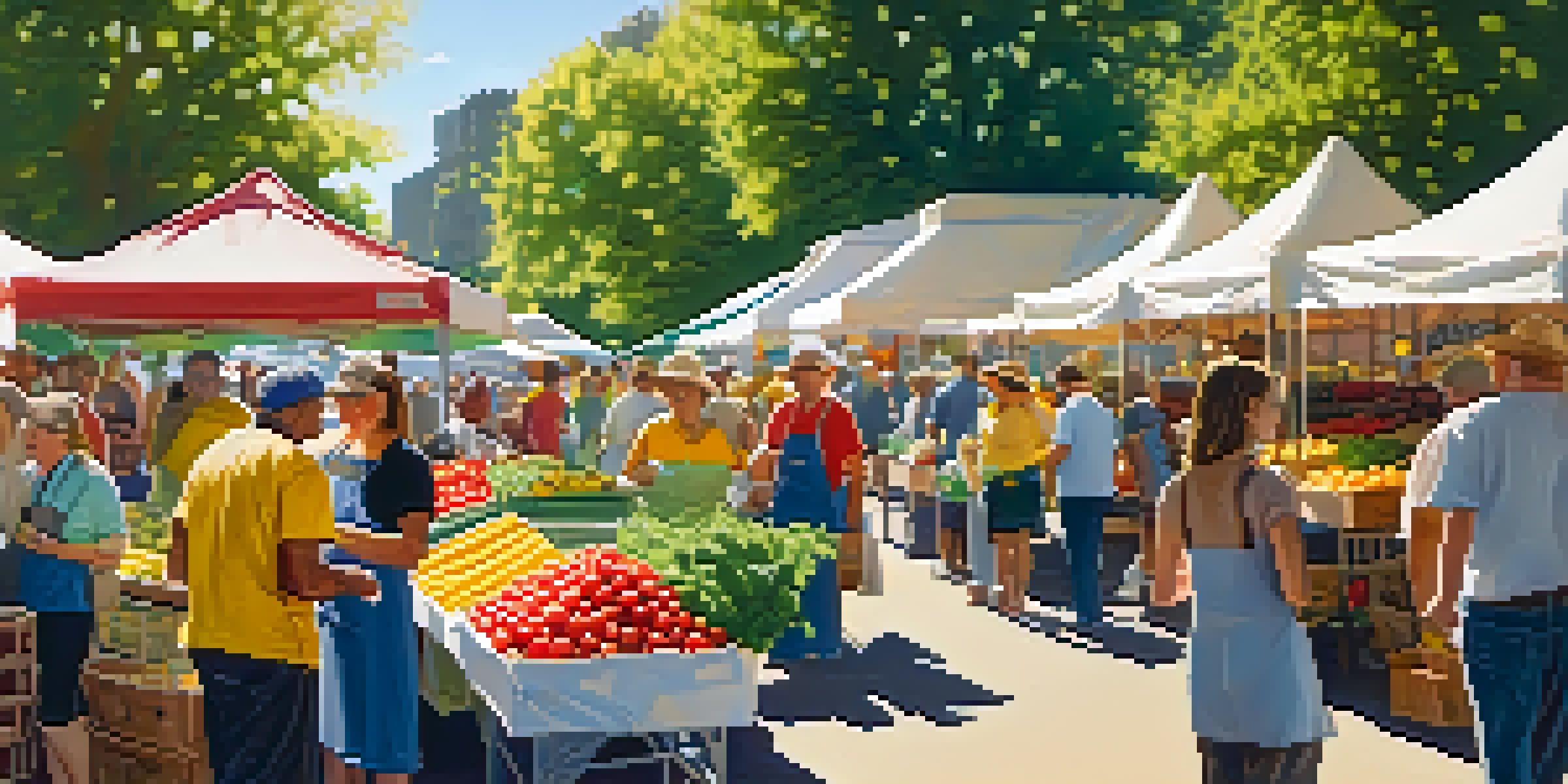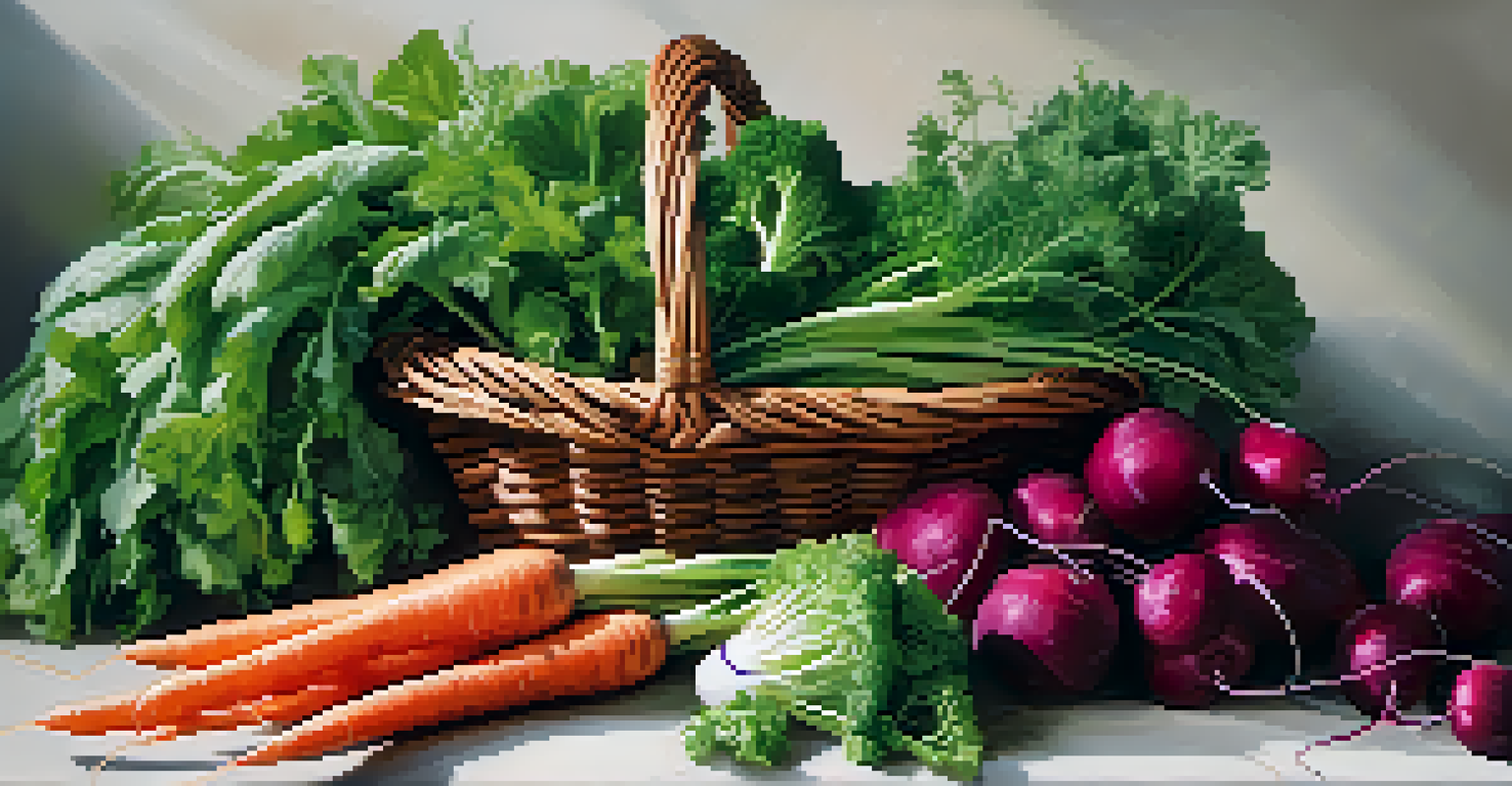From Farm to Fork: Understanding Local Food Production

The Importance of Local Food Production
Local food production is not just a trend; it’s a vital part of sustainable living. By sourcing food from nearby farms, communities can reduce their carbon footprint and support local economies. This practice fosters a connection between consumers and producers, creating a sense of community and trust.
Eating locally and seasonally connects us to our own community and the world around us.
Moreover, local food often tastes better and is more nutritious due to the shorter time between harvest and consumption. When food is grown locally, it doesn’t need to travel long distances, which can lead to nutrient loss. Fresh, seasonal produce can enhance our meals and improve our overall health.
Supporting local food systems also encourages biodiversity and sustainable farming practices. By choosing to buy from local farmers, consumers can promote agriculture that respects the environment, preserves natural resources, and protects local ecosystems.
Understanding the Farm-to-Fork Journey
The journey from farm to fork encompasses several key stages. It begins with farmers growing crops or raising animals, often using methods that prioritize sustainability. Once harvested, food must be processed, packaged, and transported to reach consumers.

Each step of this journey presents opportunities for improvement and innovation. For instance, many farmers are adopting organic practices, while local markets and co-ops are enhancing distribution channels to make fresh food more accessible. This interconnected system showcases the effort that goes into bringing food to our tables.
Support Local Economies
Buying from local farmers reduces carbon footprints and strengthens community ties.
Understanding this journey allows consumers to appreciate the work that goes into food production. Awareness of where our food comes from can lead to more informed choices and a greater appreciation for local farmers and producers.
The Role of Local Farmers Markets
Local farmers markets serve as a hub for community engagement and local food production. They provide a direct connection between consumers and farmers, allowing shoppers to ask questions and learn about the food they are buying. This interaction fosters a deeper understanding of food sourcing and cultivation.
The future of food is local, and it’s about connection—connecting people to food, to farming, and to one another.
At these markets, consumers can find fresh, seasonal produce that is often harvested just hours before being sold. This not only ensures quality but also supports the local economy by keeping money within the community. Plus, the festive atmosphere of farmers markets encourages social interactions and strengthens community ties.
Participating in farmers markets can also educate consumers on sustainable practices. Many farmers are eager to share their farming techniques, whether they’re organic, biodynamic, or regenerative, helping shoppers make choices that align with their values.
The Benefits of Eating Seasonally
Eating seasonally means choosing foods that are harvested at their peak. This practice not only enhances flavor but also aligns with local agricultural cycles. Seasonal eating encourages variety in our diets and allows us to enjoy the freshest produce available.
When we eat in tune with the seasons, we often support local farmers who grow what’s naturally available. This reduces the need for artificial growing methods and long-distance transportation, benefiting both the environment and local economies. It’s a win-win situation!
Embrace Seasonal Eating
Eating foods that are in season enhances flavor, supports local agriculture, and promotes sustainability.
Additionally, seasonal eating can lead to a more sustainable lifestyle. By consuming foods that are in season, we help decrease the demand for out-of-season produce, which often requires significant energy and resources to grow and transport.
Sustainable Practices in Local Food Production
Sustainable farming practices play a crucial role in local food production. Techniques such as crop rotation, organic farming, and permaculture help maintain soil health and biodiversity. These methods ensure that the land remains productive for future generations.
Local farmers often implement sustainable practices to meet the needs of their communities while protecting the environment. For example, many use integrated pest management (IPM) to minimize the use of chemicals, relying more on natural predators to control pests. This approach benefits both the ecosystem and consumer health.
Supporting sustainable local food production can also inspire larger agricultural movements. As consumers prioritize sustainability, more farmers are likely to adopt eco-friendly practices, creating a positive ripple effect throughout the food system.
Challenges Facing Local Food Producers
While local food production has many benefits, it also faces several challenges. Farmers often struggle with financial instability, as they may not receive the same subsidies as larger, industrial farms. This can make it difficult for them to compete in the marketplace.
Additionally, local food systems can be vulnerable to climate change, which impacts crop yields and food security. Extreme weather events and shifting growing conditions can pose significant risks to farmers, which may affect the availability of local produce.
Engage with Farmers Markets
Farmers markets create a direct connection between consumers and producers, fostering community engagement and education.
These challenges highlight the importance of community support for local food systems. By choosing to purchase from local farmers and advocating for policies that support sustainable agriculture, consumers can help create a more resilient food network.
How to Get Involved in Local Food Systems
Getting involved in local food systems is easier than you might think! Start by visiting farmers markets, where you can meet local producers and learn about their offerings. This connection can transform grocery shopping from a mundane task into a community experience.
You can also support local farms by joining a Community Supported Agriculture (CSA) program. By subscribing to a CSA, you receive a regular supply of seasonal produce directly from the farm, often at a better value than grocery stores. This not only supports the farmer but also introduces you to new foods and recipes.

Lastly, consider advocating for local food initiatives in your community. This could involve supporting local policies that promote sustainable agriculture or participating in local food events. Every small action contributes to a healthier, more connected food system.